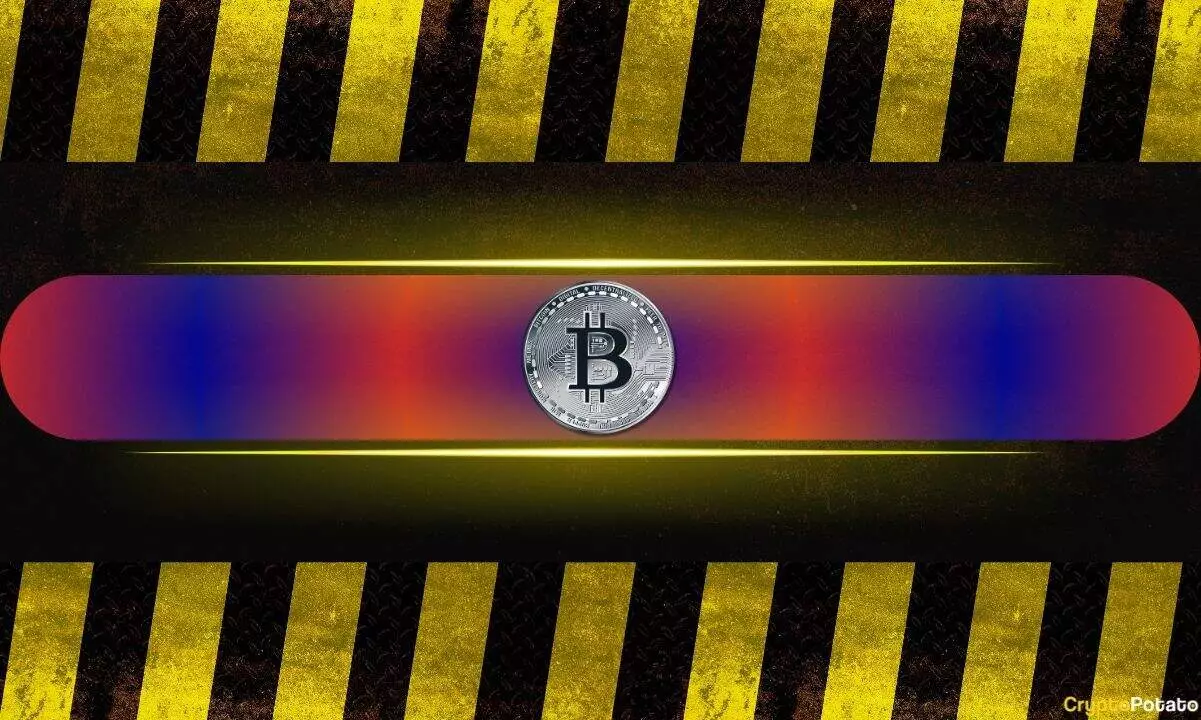The recent crypto rally around Bitcoin has sparked both admiration and cautious skepticism. While proponents herald this as a testament to Bitcoin’s resilience and growing institutional interest, beneath the surface lies a fragile foundation that could unravel at any moment. An in-depth examination of the current market conditions reveals a complex tableau — one characterized by a strategic shift among investors and an increasingly volatile demand landscape. This is not a time for blind optimism; it’s a moment to scrutinize whether this upward momentum is genuinely sustainable or merely a fleeting burst fueled by short-term capital rotations.
The latest insights indicate that long-term Bitcoin holders—those who believed in its promise over the years—are beginning to cash out. For the first time in recent memory, we see these seasoned investors lock in profits and transfer their holdings onto exchanges. Such behavior is not coincidental; it is emblematic of a maturing market approaching the natural maturity cycle, where profits are booked, and distribution begins. Instead of a sign of relentless strength, this turning point could signal an impending correction, especially if demand from fresh buyers stalls. New entrants like ETFs, institutional giants, and retail speculators are stepping into the market, ostensibly buoying prices. However, these players often react to short-term incentives rather than long-term fundamentals, which fosters an unstable price environment.
The real test for Bitcoin’s sustainability is the demand’s durability. Analyzing on-chain data reveals that most BTC is in profit at current price levels, with the cryptocurrency’s spot price exceeding 95th percentile profit zones. This situation is a double-edged sword. On one hand, it illustrates investor confidence, but on the other, it predisposes the market to profit-taking episodes. Short-term traders and opportunists, eager to lock in gains, may trigger sharp sell-offs, leading to increased volatility. This pattern has precedent during previous bull cycles, where surges in unrealized profits often result in abrupt corrections. The critical question then becomes: will spot demand hold strong enough to push Bitcoin beyond its recent peaks, or are we looking at a textbook setup for a correction masked as bullish momentum?
Altcoins’ Explosive Catch-Up — A Double-Edged Sword
With Bitcoin cooling off after its recent highs, the altcoin arena is experiencing what industry insiders are calling an “aggressive catch-up rally.” Capital fleeing Bitcoin in search of higher short-term gains is fueling a speculative surge among large-cap altcoins like Ethereum and Solana. While this reallocation underscores the vibrant diversity within the crypto space, it also signals a shift in investor psychology—favoring quick wins over patience, which aligns poorly with the underlying necessity for sustainable growth.
This rapid rebalance, although attractive to traders looking for quick profits, raises questions about the underlying health of the broader market. An increase in altcoin dominance and a decline in Bitcoin’s share of total crypto market cap suggest a riskier environment, where short-term trading becomes dominant over long-term investing. This shift could foster increased instability, especially if the rally in altcoins is driven mostly by speculative capital rather than fundamental improvements in projects or technology.
Additionally, the surge in the Other Index — a measure tracking cryptocurrencies outside the top ten by market cap — underscores this volatile environment. Its impressive 35% jump over two weeks and the addition of roughly $85 billion in total value highlight a heightened appetite for risk. This momentum, however, can be easily lost if Bitcoin, traditionally the market’s anchor, declines sharply. Historically, such diversification into lesser-known assets often comes with extraordinary volatility; investors must question whether this pattern points to genuine innovation or reckless speculation.
Furthermore, Bitcoin’s diminishing dominance — now declining by nearly 7% over seven consecutive days — is probing the core question of market strength. Less dominance typically points to reduced confidence in Bitcoin’s lead role and indicates traders are more comfortable chasing altcoin rallies despite their higher volatility. This duality exposes an inherent contradiction: while altcoins can offer short bursts of profit, reliance on them as the primary growth drivers risks a bubble-like environment that could collapse without warning.
The Middle Path — A Cautionary Perspective
From a centrist, center-right economic standpoint, the current crypto scenario presents both opportunity and peril. The conviction in Bitcoin’s long-term potential remains, but it is fundamentally undermined by short-term speculative behavior and a mounting risk of a liquidity crisis. The market’s current rotation suggests a phase of heightened vulnerability; it is neither a clear sign of sustained strength nor an indication that the bull run will end abruptly, but rather a warning that the robust appearance may be masking underlying fragility.
I believe that a prudent investor, especially within a centrist-liberal framework that values sustainable growth over hype, should approach this environment with skepticism. While innovation and institutional acceptance are encouraging signs, they should not blind us to the inherent risks of market overheating. As the short-term profit-takers lock in gains and the market’s volatile nature intensifies, the risk of abrupt correction increases. Investors must recognize that true resilience in this domain is built over time through fundamentals—not impulse-driven rallies or fleeting capital rotations.
The current environment incentives a balanced strategy: capitalize on the technological promise of blockchain innovation and institutional growth, but avoid succumbing to the hype-driven euphoria that inflates prices without establishing sustainable demand. The only way for Bitcoin and the broader crypto market to truly solidify their place in a conservative, growth-oriented portfolio is through genuine demand, long-term adoption, and an environment free from excessive speculation. Until then, the current rally might prove, in the long run, to be nothing more than a precarious mirage—one that could dissolve as quickly as it appeared.


Leave a Reply